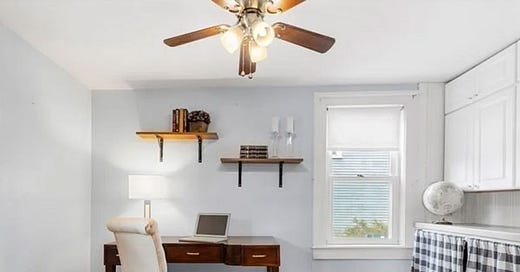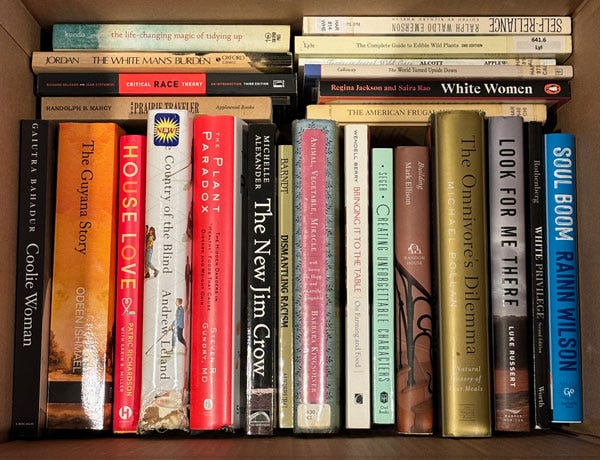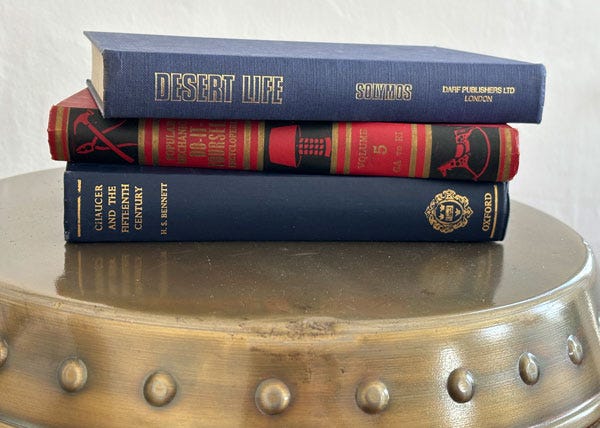Welcome to Willoughby Hills!
Every Wednesday, I offer a few short ideas that I hope will inspire you to do some more reading, thinking, and exploring. Let’s take a little walk together and see where the path leads…
On Stage
This past week has been an incredibly busy one for my family, which explains why I missed Sunday’s column again and why today’s entry will be short.
As of this morning, our old house is now officially on the market, which has been a big milestone to reach.
Even though we are living in it through the end of the school year, we have had to nearly completely empty that house so that it’s looked good for the real estate listing photos, open houses, and other showings. This has meant only keeping necessities hidden out of sight in cabinets and literally emptying almost everything else out of the house.
It’s been a process.
We had movers help us two weeks ago to move the majority of our furniture. We spent last weekend cleaning and packing the remainder of our items. Save for a couch, our dining table, beds, and dressers, our old house is now effectively empty.
Earlier this week, our realtor came by with a staging company to make the house look appealing and to prop the house so that potential buyers could imagine living in our spaces. It was a bit disorienting that after spending two weekends moving things out of the house, suddenly there was a rush to move things into the house!
The stager’s goal was to make rooms just full enough to suggest how they could be lived in, yet generic enough so that people could imagine their own life in the space. For example, a room that we now call the “den,” which has been everything from a home office to a piano room to a play room over the last 15 years was styled to look like a basic home office, even down to the plastic laptop prop on the desk.
Nothing that you see in the photo belongs to us: the desk, candles, books, globe, and even the rug were all the work of the stager.
This whole experience of emptying a house of our personal items, only to fill it again with generic items, has me thinking even more about our relationship to “stuff.”
I spent a lot of time boxing up the bookshelves in all of our rooms and our office space (we have a lot of books), packing away my titles that seemed to fit into a few genres: racism, food production/agriculture, and writing. As much as I have learned from Barbara Kingsolver, Saira Rao, or Michael Pollan, it’s possible that my worldview may clash with a potential buyer or be a turnoff to them. The stager brought in just a few books, rather than our shelves and shelves of them, and they’re all a bit… generic.
What’s been strange about trying to “live” in a staged house is just how unlivable it truly is. Our kitchen, which is usually the nerve center of the home and which gets cooked in at least twice daily (if not three times), is suddenly barren and sparse. The microwave, stand mixer, toaster, and coffee maker that usually live permanently on our countertops are hidden out of sight. Even the dish rack is hidden, so logically, there’s no place to dry dishes once they’re washed.
It’s strange how our visual perception of our houses has changed over time and how good house photography and staging changes what we want and how we live in spaces.
I feel like this extends not just to the home buying and selling process, but that photography has changed how we live day to day in our houses.
I’ve talked about this before on the podcast (most recently in my second episode with Patric Richardson), but when I first started at This Old House in 2005 and would travel the country filming in random houses, people had quirky places!
There was a house in Indianapolis where the filmed in 2007 or so where the entire kitchen had hundreds of hot sauce bottles above the cabinets on display. I remember a house in Sacramento with an older married couple whose theme can only be described as “breasts.” They had several nude pieces of artwork on their walls, but also plenty of tacky souvenirs featuring topless women, including things like salt and pepper shakers shaped like a pair of naked breasts. We had to avoid certain angles in that house.
But as the years went on, houses went from reflecting their owners unique styles and tastes to all fitting in a very Instagram/Pinterest aesthetic. Starting in roughly 2015 or so, houses all seemed to take on the same vibe, with similar paint colors, throw pillows, and artwork on the walls. Houses felt less personal and more like magazine photos.
I understand the value of staging a house for sale and letting the new owners visualize their new life in a space, but I never quite understood the notion of wanting to live in a space that looked so generic all of the time. After all, to pull off this look, I can’t even let my dishes drip dry.
It reminds me a bit of people that try to model their daily attire after what they see on TV or in magazines. Having worked on plenty of video and photo shoots over the years, I know what it takes to accomplish a certain look. A model may be wearing an off the shelf outfit for a shoot, but what’s often not seen is the safety pins, clothes pins, and other items giving a piece of clothing shape. Or the large amounts of hairspray or clips hidden just out of view that hold hair in just the right way.
In the end, it’s been a lot of work to empty the house, then fill it with staging furniture, only to empty it again, so that someday another family can move their stuff in here. It’s a dance of stuff. Which is basically what the American existence in 2024 has become.
I publish new issues every Wednesday and Sunday. Sign up to always receive the latest issue and support my work:
Other Wednesday Walks
If you’ve missed past issues of this newsletter, they are available to read here.








The dance with stuff is really life's 3 stages: wanting stuff, acquiring stuff, getting rid of stuff. This is a developed-world problem, not exclusively American, and dominated most of the 20th century. The staged houses all look the same, as do the generic backgrounds on web meetings and homogenized store fronts on the street and TED talks' structure and rhythm. Indoor yard/estate sales reveal the chaos of life in all its glory.